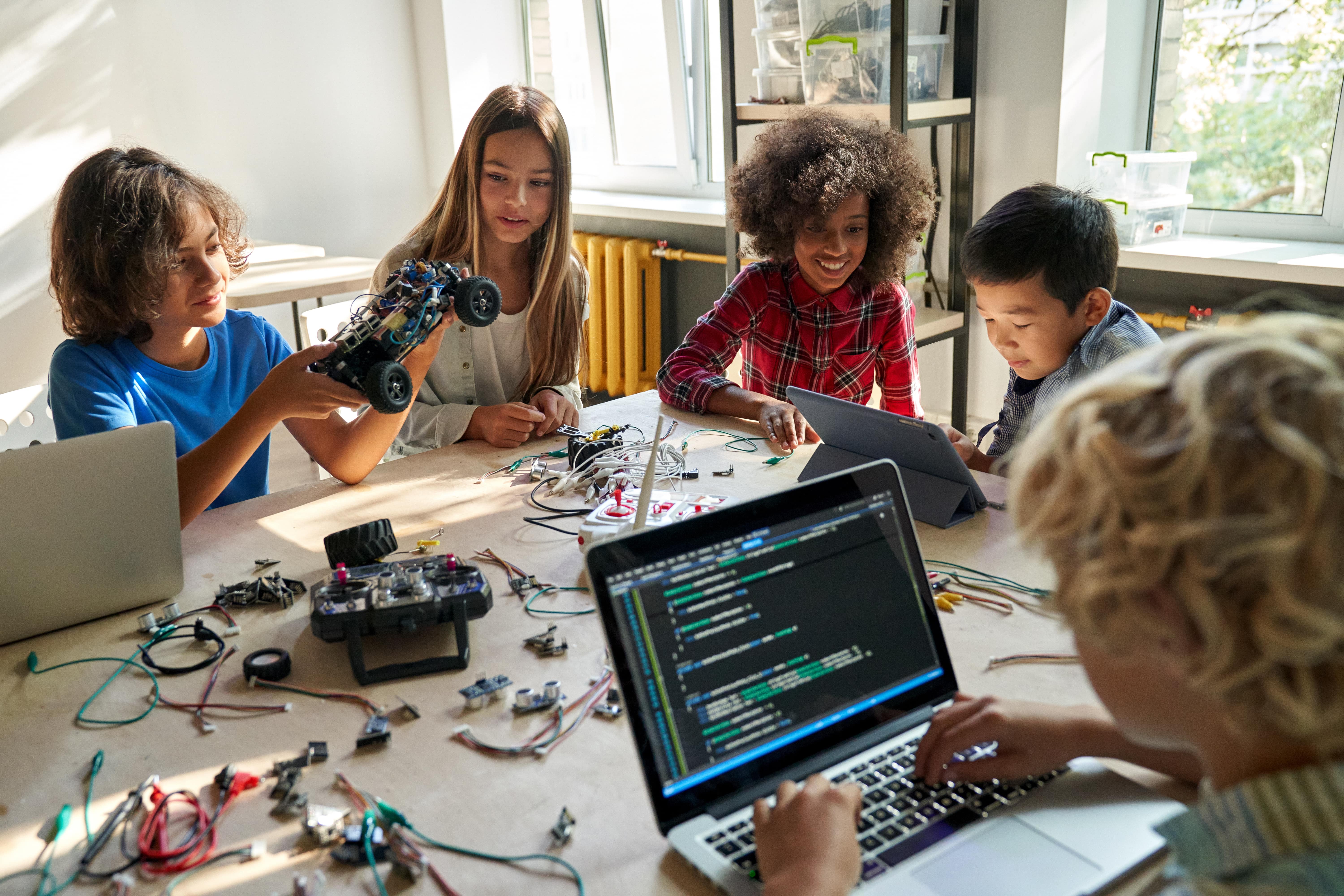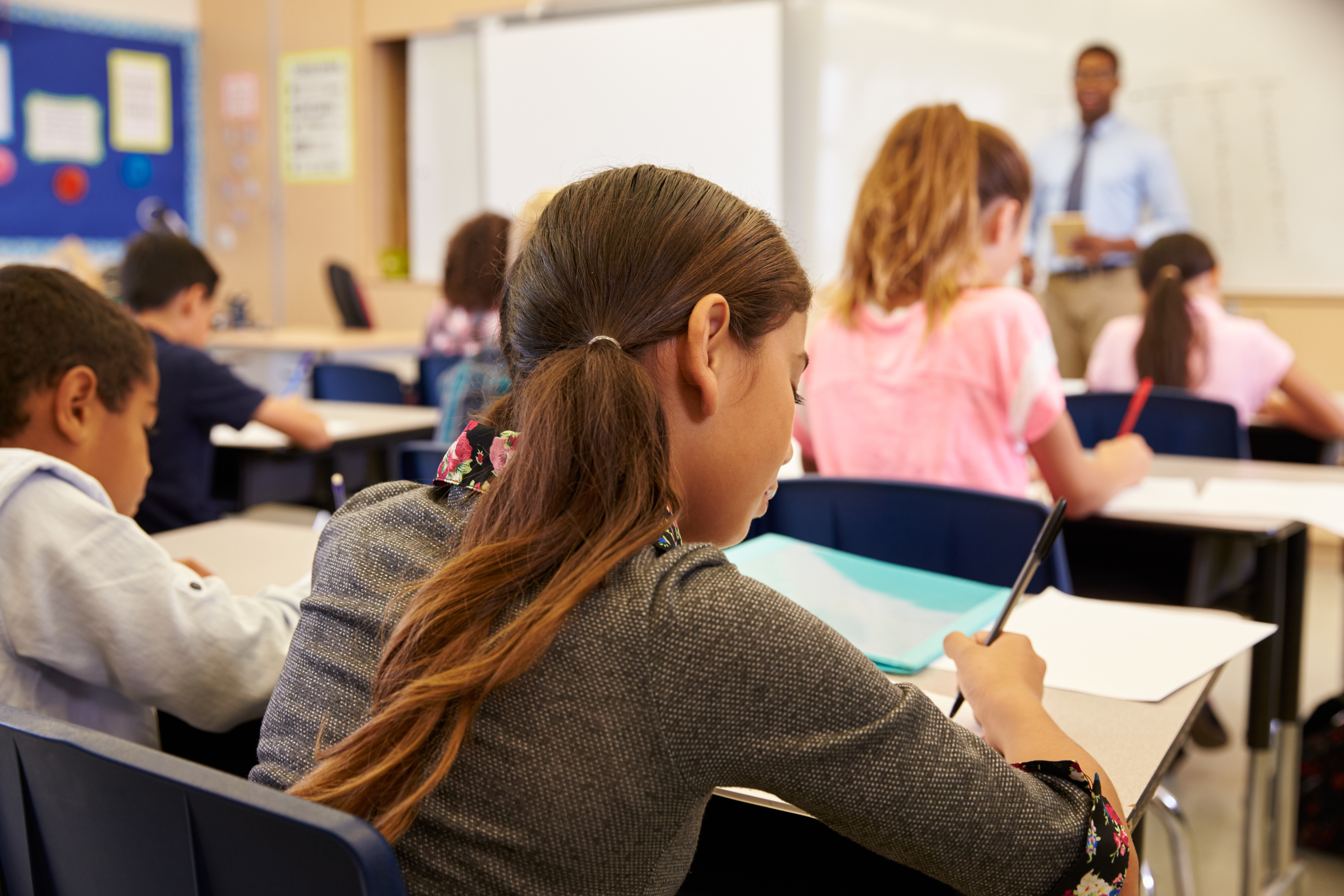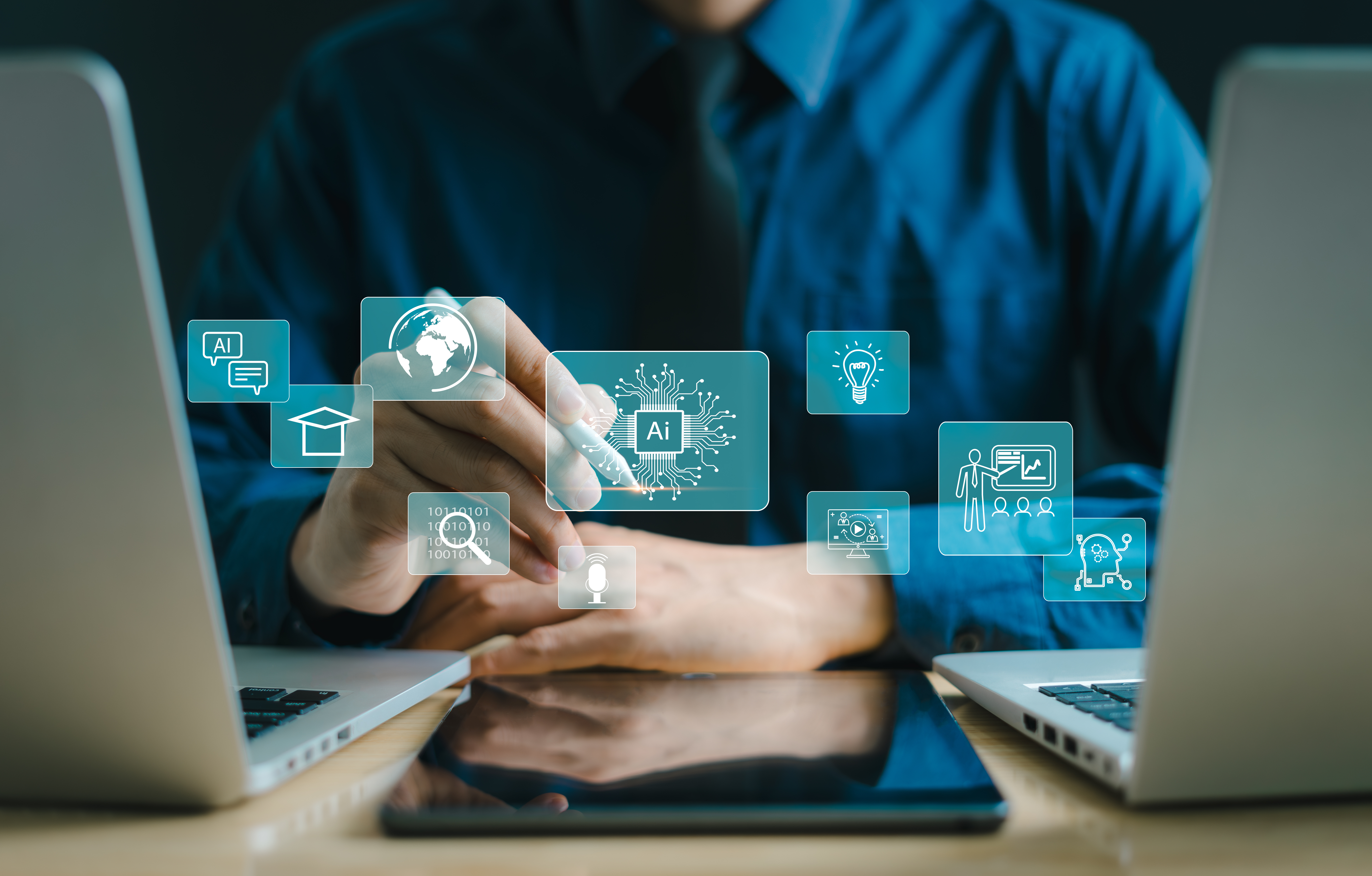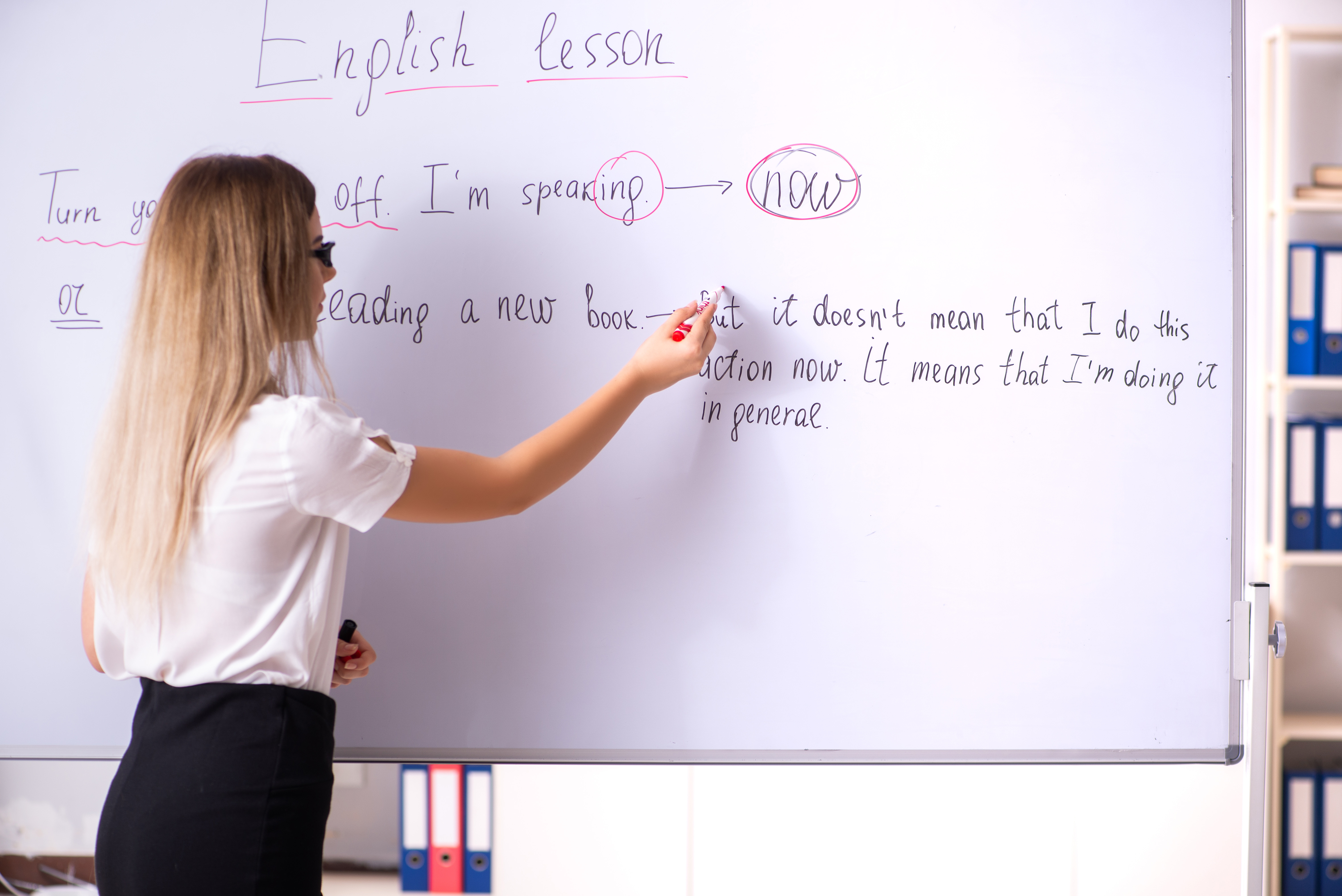Ed Tech Blog

As the global economy continues to shift toward automation, data science, and high-tech innovation, the demand for workers skilled in science, technology, engineering, and mathematics (STEM) is growing exponentially. In the United States, this demand is outpacing the current supply of qualified professionals. Industries like artificial intelligence, cybersecurity, clean energy, and biotechnology all require a strong pipeline of STEM talent, yet many students aren’t being adequately prepared for these careers during their school years. The root of the solution lies in early exposure. Introducing STEM concepts as early as kindergarten not only builds a strong foundation for future academic success but also sparks a lifelong curiosity that can shape a student’s future.
Learning by Doing: The Power of Hands-On, Inquiry-Based Education
One of the most effective ways to foster an early interest in STEM is through hands-on, inquiry-based learning. Rather than relying solely on textbooks and lectures, students should be encouraged to explore real-world problems through experimentation and exploration. Activities like building a bridge out of popsicle sticks, programming a robot to follow a maze, or growing plants under different lighting conditions transform passive learners into active problem-solvers. These types of projects not only reinforce key concepts in science and engineering but also help children develop critical thinking, creativity, and perseverance. Even in classrooms with limited resources, educators can facilitate meaningful experiments using affordable tools like LEGO kits, recyclable materials, or basic science kits. What matters most is cultivating a mindset of discovery and problem-solving from an early age.
Making STEM Relevant: Cross-Curricular Integration
Integrating STEM across different subjects can also help demystify these disciplines and make them more accessible to a broader range of students. Too often, STEM is taught in isolation, which can make it feel abstract or disconnected from students' everyday experiences. However, when math is woven...
Read more: Building Future Innovators: Why Early STEM Education Matters in K–12

Middle school is a critical time for students to develop foundational skills that will support them throughout their academic and professional lives. One of the most powerful yet often overlooked skills is note-taking—not just as a means of recording information but as a process for making sense of what they are learning. Many students view notes as mere scribbles they are expected to review before a test. However, when educators teach students to use their notes to analyze, reflect, and build understanding, they help develop more independent and thoughtful learners. Encouraging students to use notes for sense-making is a shift from rote memorization to deeper cognitive engagement, and it can transform how students approach their studies.
Redefining the Purpose of Note-Taking
To begin with, it is essential to help students understand that note-taking is not just about writing things down—it’s about thinking while writing. Many middle schoolers believe that their notes are only useful the night before an exam. Teachers can help change this mindset by emphasizing that notes are tools for organizing thoughts, breaking down complex ideas, and capturing the learning process as it happens. Teachers can model how they themselves use notes to prepare lessons, write reports, or...
Read more: Write, Reflect, Remember: Empowering Students to Use Notes for Deeper Learning

In every classroom, some students sit quietly, confused but unwilling to ask questions. They may be struggling but feel afraid, ashamed, or uncertain about how to seek help. Despite the best intentions of teachers who encourage questions and offer support, many students still choose silence over speaking up.
So why does this happen? And what can educators do to change it?
The truth is, students often don’t ask for help not because they don’t want to learn—but because they fear judgment, lack confidence in themselves, or don’t know that asking is expected. By understanding these barriers and making small but intentional shifts, teachers can build a classroom culture where asking for help becomes the norm—not the exception.
Why Students Don’t Ask for Help
1. Fear of Judgment: One of the most common reasons students avoid asking for help is the fear of being judged. In a classroom full of peers, no one wants to seem slow, behind, or unintelligent. This fear is especially strong during adolescence, when social approval and self-image are highly sensitive. Students may believe that asking a question exposes a weakness or failure. Even high-achieving students experience this. The pressure to appear competent can keep them from...
Read more: The Help-Seeking Gap: 3 Powerful Shifts to Empower Every Student

Artificial intelligence has rapidly woven itself into the fabric of education. With tools like ChatGPT, Grammarly, QuillBot, and other AI-powered platforms becoming easily accessible, students now have unprecedented support at their fingertips. While these technologies can enhance learning and productivity when used correctly, they also open the door to misuse, especially when students rely on them in ways that circumvent genuine effort or violate academic policies. This presents a new challenge for educators: how to address inappropriate AI use while still fostering a learning environment that encourages curiosity, integrity, and digital responsibility.
Understanding that students might misuse AI for a variety of reasons—ranging from pressure to perform, lack of clarity around rules, or even simple curiosity—is essential. Instead of framing AI solely as a threat, teachers can approach these moments as opportunities to teach digital ethics, academic honesty, and independent thinking. Here are several proactive and constructive strategies educators can use when students don't follow classroom guidelines regarding AI use.
Establish Clear Boundaries and Reinforce Them Regularly
One of the most effective ways to prevent AI misuse is to start with clear, well-communicated expectations. Students often operate in gray areas when guidelines are vague or unstated, so teachers must be...
Read more: Guiding Students Toward Responsible AI Use: What to Do When They Don’t Follow the Rules

While science classes are often seen as spaces for learning complex formulas, conducting experiments, and studying scientific theories, they also offer unique opportunities to develop language fluency, especially for English Language Learners (ELLs). The science classroom is one of the few places where students can engage with both content knowledge and language skills simultaneously. For ELLs, learning scientific concepts in English helps them not only improve their academic language but also become more proficient speakers, writers, and listeners. By integrating language development strategies into science lessons, teachers can help students build fluency in an engaging and meaningful context. Here’s why science class is the ideal setting for enhancing language fluency and how teachers can use effective strategies to help students succeed.
1. Contextual Learning with Scientific Vocabulary
One of the most effective ways to build language fluency is by immersing students in real-world, meaningful contexts. Science class offers exactly this type of environment. In a typical science lesson, students learn new concepts and vocabulary that are directly tied to hands-on experiences and experiments. Instead of simply memorizing words in isolation, students encounter new vocabulary in ways that are relevant to their daily learning. This type of contextual learning not only...

Project-Based Learning (PBL) has become an essential part of modern education, offering students opportunities to engage with content in meaningful, real-world contexts. One innovative way to enhance PBL is through podcasting, a medium that allows students to express their learning in creative and interactive ways. With the growing popularity of podcasts, educators have realized their potential to transform traditional learning environments. Podcasts are not only engaging but also versatile tools that can be utilized in any content area, providing students with the opportunity to showcase their learning. Here, we will explore four key benefits of using podcasting as a PBL project: fostering creativity and critical thinking, promoting collaboration and teamwork, enhancing communication skills, and offering real-world applications for learning.
1. Encourages Creativity and Critical Thinking
Podcasting is inherently a creative medium, and this creative process requires students to engage in critical thinking and higher-order problem-solving. When tasked with creating a podcast, students are forced to think about how best to convey their research, ideas, or understanding of a topic in an audio format. Unlike written reports or traditional presentations, podcasts require a deeper level of creativity in both structure and delivery. Students must plan how to organize their content effectively,
- Wonder Wagons: Mobile Science Labs That Inspire Preschoolers to Explore Nature All Year Long
- Empowering Tomorrow’s Leaders: Strategies for Creating an Effective Student Leadership Program
- How to Harness AI Thoughtfully to Enhance Computer Science and Math Education
- Mastering Long Class Periods: How Chunking and Gradual Release Keep Students Engaged
